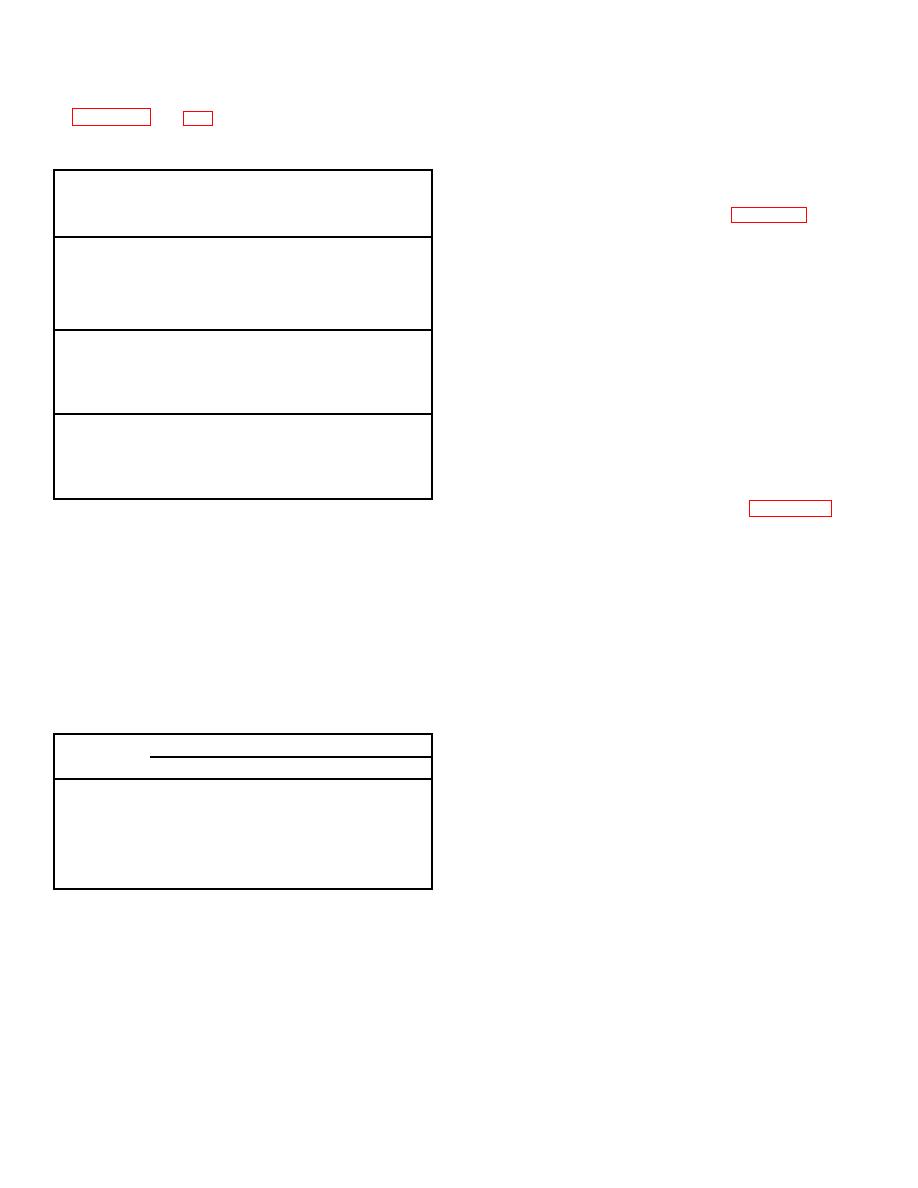 |
|||
|
|
|||
|
Page Title:
Table 3-1. Foam-in-Place Application (General) |
|
||
| ||||||||||
|
|
 TM 746-10
Note
Note
Cushion thicknesses listed are recommended
as minimum thicknesses. Foam selection may
Table 3-1. Foam-in-Place Application (General)
be determined by availability of classes of
foam. The most rigid foam should be selected,
Item
Technique
when feasible, to reduce cube.
weight
(Listed in order
Recommended
(2) Split pack, inverted (fig 3-22).
This
(lbs)
of preference)
foam
class
technique is used for items weighing between 50 and
150 pounds that can be inverted without difficulty and
To 50
Split pack, alternate
* Flexible / semirigid
are not susceptible to damage in the inverted position.
Split pack, standard
"
"
Split pack standard instructions are not furnished in this
Split pack, inverted
"
"
section because of their similarity to split pack inverted
Preformed molding
"
"
instructions. The split pack standard procedures are the
Foamed container
"
"
same except that the item or the box is inverted and the
51-150
Split pack, inverted
Semirigid / rigid
support blocks are not removed. Instead, they become
Split pack, standard
"
"
a part of the cushioning, blocking, and bracing.
Foamed container
"
"
(a) Clean and preserve the item per the
Foam in bag
"
"
appropriate packaging instructions for the individual
Preformed molding
"
"
item. Wrap the sharp corners and projections of the
151-
Split pack, standard
*Semirigid / rigid
item with a suitable cushioning material and secure with
Encapsulated
"
"
tape. Wrap the complete item with polyethylene film
Foamed container
"
"
and secure with tape.
Foam in bag
"
"
Preformed molding
"
"
(b) Measure and weigh the item and select
the appropriate size box, as specified in figure 3-26.
* Items weighing over 200 pounds shall be packed
(c) Close and tape the top flaps of the box,
with rigid class foam. Items weighing over 50
invert the box, and open the bottom flaps.
pounds shall not be packed in flexible class foam.
(d) Select two pieces of blocking from rigid
foam, wood, or any other suitable material that will
Note
temporarily support the item. Cut the blocking to
Recommended techniques and foam classes
dimensions which will allow the item to rest inside the
are listed for normal field packaging
center of the box.
operations. Technique preference may vary
(e) Place the inverted item on the blocks.
according to types of foaming equipment and
availability of packaging materials.
CAUTION
Items that must stay in an upright position to
Table 3-2. Foam-in-Place Cushion Thickness Application
prevent internal damage should not be packed
Item weight
Cushion Thickness (inches) For
using this inverted technique.
(Ibs)
Flexible
Semirigid
Rigid
(f) Drape a piece of polyethylene film over
1-25
3
2
--
the top half of the item covering the item, sides, and
26-50
4
3
2
ends of the box. Secure the top of the sheet to the box
51-75
--
4
3
flaps with tape. The sheet should be secured so the film
76-100
--
5
4
will not sag below the horizontal center of the item while
101-200
--
6
5
the foam is expanding.
201-
--
--
6
(g) Dispense foam. The amount of foam to
dispense is normally predetermined by the equipment
Note
supplier, but the foam should surround the item and fill
the container.
Cushion thicknesses listed are recommended
(h) After the foam has completely
for normal field packaging operations for items
expanded, allow appropriately 15 minutes curing time.
with fragility factors from medium to high.
Trim excess foam (if necessary), fold the polyethylene
Items with known low-fragility factors shall be
sheet over the foam, close the bottom flaps, and secure
packed per the Army Packaging Data
with tape.
Microform File.
(i) Turn the box upright, remove the
temporary blocking, and repeat (X)(f), (g), and (h)
above.
3-37
|
|
Privacy Statement - Press Release - Copyright Information. - Contact Us |